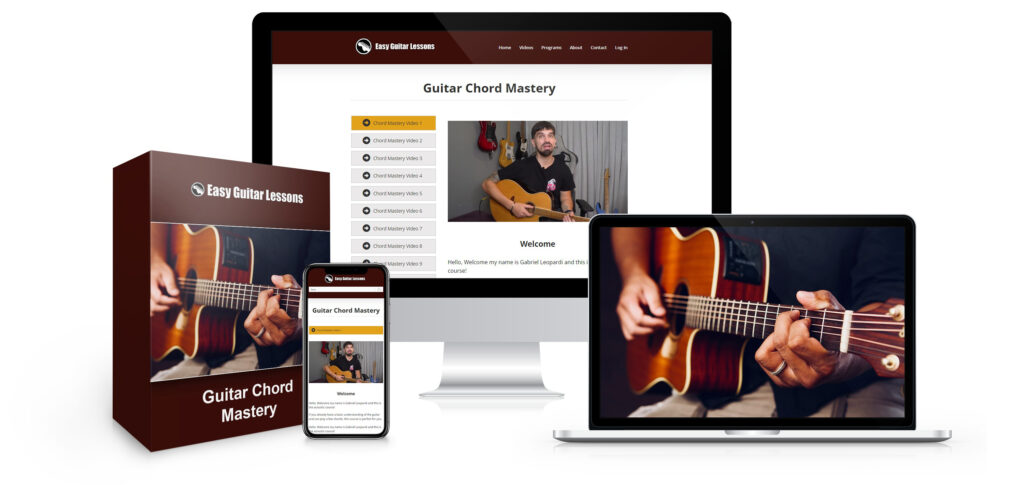How To Play Open Major Chords

In this lesson, we will get into the world of open major chords, starting with three essential chords:
E Major, A Major, and D Major. These chords form the basis of countless songs and are crucial for any aspiring guitarist.
1. Learning the E Major Chord

The E Major chord is one of the first chords every guitarist learns.
It’s played in the first position, which means it’s played near the headstock of the guitar.
Follow these steps to form the E Major chord:
- Place your middle finger on the 2nd fret of the 5th string (A).
- Put your ring finger on the 2nd fret of the 4th string (D).
- Ensure that your index finger is not touching any strings, allowing the 1st and 6th strings to ring open.
- Strum from the 6th string (E) downwards, avoiding the 6th string (E) and the 1st string (high E).
Pro Tip:
Keep your fingers close to the frets for a clean and clear sound. Apply just enough pressure to the strings to produce a clean tone.
2. Mastering the A Major Chord

Next up is the A Major chord.
This chord is also played in the first position and is an excellent follow-up to the E Major chord.
Here’s how to form the A Major chord:
- Place your index finger on the 1st fret of the 3rd string (G).
- Put your middle finger on the 2nd fret of the 4th string (D).
- Place your ring finger on the 2nd fret of the 2nd string (B).
- Strum from the 5th string (A) downwards, avoiding the 6th string (E).
Pro Tip:
Curl your fingers slightly and use the tips to press down on the strings.
This will prevent unwanted muting or buzzing of adjacent strings.
Understanding the D Major Chord

The D Major chord completes this trio of essential open major chords.
This chord is also played in the first position and introduces you to a new finger placement.
Let’s learn how to form the D Major chord:
- Place your index finger on the 2nd fret of the 3rd string (G).
- Put your middle finger on the 2nd fret of the 1st string (high E).
- Position your ring finger on the 3rd fret of the 2nd string (B).
- Strum from the 4th string (D) downwards, avoiding the 6th and 5th strings (E and A).
Pro Tip:
Arch your fingers slightly to avoid touching the adjacent strings.
This will ensure a clean and distinct sound for each note in the chord.
In the next part, we’ll continue to expand your chord repertoire as we explore open major chords G and C.
Keep strumming and have fun as you progress on your guitar journey!

